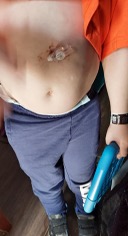Written by our Registered Dietitian, Heather-Ann B.
Feeding Tube Awareness Week is observed worldwide during the first week in February and takes place this year from February 5 to 9. The feeding tube, a masterful invention of modern science, has saved millions of lives and increased the chances of infant survival at a tremendous rate.
In 2011, the Feeding Tube Awareness Foundation designated a week to raise awareness about the importance of tubes in the lives of people. Each February, families of patients and survivors come together to share the positive impact of feeding tubes in their lives and challenge the stigma around the same.
What is a feeding tube?
Feeding tubes are another way that children and youth can receive nutrition, water and medications by mouth. These tubes provide a route to the stomach and/or small intestine when a child or youth cannot eat or drink enough to support their nutrition needs or if they cannot eat or drink safely by mouth. The length of time a child or youth has a feeding tube can vary, as some may require short-term assistance with feeding, or others may depend on the tube for many years or for life.
There are different types of feeding tubes that may deliver nutrition to different places in the body. Feeding tubes can send nutrition to the stomach or into the jejunum (small intestine) and may either enter through the nostril (NG-tube) or directly through a surgical opening in the abdomen (G/GJ-tube).

Children and youth may either receive all or some of their nutrition by feeding tube depending on how much they can eat or drink by mouth. Some may only use the tube for hydration or medications. With support from their healthcare team, families can work towards finding the right route for feeding, the type and amount of formula or food to put through the tube, and the feeding schedule that works best for the client and family.
Feeding tube support at Grandview Kids
Grandview Kids offers multiple services that can support tube feeding management. A variety of clinicians may work together to help families with their tube-feeding needs.
Nutrition Clinic: The Registered Dietitians at Grandview Kids’ Nutrition Clinic work with families to ensure nutrition needs for growth and development are being met through tube feeding. Dietitians can also support problem-solving when difficulties with tolerance to tube feeding occur, such as vomiting or constipation.
Feeding Services: Children and youth with feeding tubes who are also working on oral feeding skills or safety may receive services from the joint OT/SLP feeding teams or receive feeding counselling from their core OT/SLP team members.
Complex Feeding and Nutrition Clinic: As of December 2023, the Complex Feeding and Nutrition Clinic started at Grandview Kids to provide additional support for children and youth requiring medical and dietetic support for their complex oral and/or tube feeding needs. In this clinic, Dr. Julie Johnstone and Heather-Ann B., RD, work closely with their OT and SLP colleagues for a multidisciplinary approach to feeding.
Brock’s journey with his G-tube
Written by Grandview parent and mom, Cassandra R.
Brock’s journey began at age six when an unfortunate tumble down the stairs resulted in multiple brain bleeds, complicating his ability to eat and drink. During his hospitalization, Brock began to lose weight, prompting the medical team to insert an NG-tube to ensure he received the essential nutrients a young boy needs.
Despite our hopes, Brock’s eating difficulties persisted even after we left the hospital and completed rehabilitation. Concerned for his well-being, I became his advocate, pushing for the installation of a G-tube to manage his nutrition and safeguard his health.



The waiting list for a G-tube was lengthy, but patience bore fruit. Brock was eventually equipped with a T-tube connection, marking the start of a new chapter. Although most patients return home the day after the procedure, Brock stayed a bit longer for monitoring due to a minor concern during surgery. Fortunately, everything turned out fine, and we were soon back home.
Our journey didn’t end there. Brock was placed on another waiting list, this time for an upgraded G-tube, the Mic-Key. After six months of anticipation, we received the call that it was Brock’s turn. The surgery went well, and after a few days in the hospital, ensuring he was stable, we returned home.
At the time of discharge, Brock weighed a mere 30 kilograms—a figure that concerned us all. But with time, love, and the right nutritional support, he began to gain weight. At his latest check-up, the scales told a story of success; Brock had gained weight and was thriving.
Looking back, the wait and the worry now seem like small hurdles in a much larger success story. As he approaches his 11th birthday, Brock is a picture of health, a testament to the life-sustaining power of medical intervention. The G-tube was more than a medical device; it was a lifeline. Without it, Brock’s story could have been very different, as he was at significant risk of choking.
Check out more Grandview Kids articles
- Team Grandview achieves Accreditation with Exemplary Standing, receiving a perfect score
- “Grandview Kids became my life raft” – International Day for People with Disabilities
- December: Dates of Significance
- From the search for support to finding a village: Celebrating Giving Tuesday
- Scarlett sparkles with hope in every step: Grandview Kids 2025 Holiday Campaign
